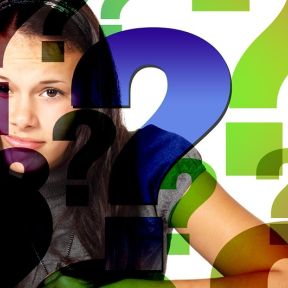
Asperger's Syndrome
Asperger's syndrome refers to a high-functioning form of autism. Although it was once classified as its own condition, Asperger’s is no longer an official diagnosis in the Diagnostic and Statistical Manual of Mental Disorders (DSM). The behavior ascribed to Asperger’s is now encompassed under the umbrella diagnosis of Autism Spectrum Disorder.
People with high-functioning autism/Asperger's often have difficulty with social situations, and they may not be able to understand the perspectives and feelings of others. However, their language and cognitive skills are often typical.
People with the condition may also engage in specific, repetitive body movements. They often have an orientation toward detail and an interest in systemizing, which can come across as an obsession. Some may show remarkable facility in a narrowly focused and usually non-social area, such as baseball statistics or train schedules.
For more on causes, symptoms, and treatments of Asperger's syndrome, see our Diagnosis Dictionary.
Contents

As with all autism spectrum disorders, people with Asperger's have difficulties in social situations. For example, they may not make eye contact, understand a joke, or recognize how to continue a conversation. People with Asperger's may struggle to understand nonverbal signals or decipher body language.
Because people with Asperger's can lack the ability to understand the perspective of others, they often do not return social feelings or share in the happiness or distress of others. They might fail to develop friendships as children and may be singled out by other kids as "weird" or "awkward."
People with Asperger's often function best with routines and rituals. They are often intensely preoccupied with a narrow area of interest, and occasionally demonstrate incredible abilities in that domain (sometimes referred to as a savant). Like those with full-blown autism, they may engage in repetitive behaviors like finger-twisting, hand-waving, or rocking.
Asperger’s was a distinct diagnosis in the previous version of the DSM. In the DSM-5, which was published in 2013, Asperger’s is part of the diagnosis of Autism Spectrum Disorder. The symptoms include:
- Persistent deficits in social communication and social interaction across multiple contexts. Examples include the inability to engage in conversation back and forth, a lack of eye contact, or the inability to maintain relationships over time.
- Restricted, repetitive patterns of behavior, interests, or activities. Examples include repeating the same hand movement consistently, strictly adhering to routines, or a fixation on a specific interest, such as the subway system.
For a diagnosis, symptoms would also be present during the person's childhood and lead to significant distress in the person’s daily life.
The DSM-5 classifies the severity of autism into three levels. Level 1 is classified as “Requiring support.” Level 2 is classified as “Requiring substantial support.” Level 3 is classified as “Requiring very substantial support.” As Asperger’s was historically a mild form of autism, it can map onto Level 1.

The roots of Asperger's syndrome or autism are not well understood. Current research points to a complex combination of biological and environmental elements.
There is a genetic component to Asperger's and autism, because the condition tends to run in families. For example, identical twins are much more likely than fraternal twins or siblings to both have autism. Recent research indicates that there may be a common group of genes whose variations or deletions make an individual vulnerable to developing autism with varying severity and symptoms.
Brain abnormalities may also be involved, as scientists have revealed structural and functional differences in specific regions of the brains of children and children with Asperger's. These differences are most likely caused by the abnormal migration of embryonic cells during fetal development that goes on to alter the brain circuits that control thought and behavior.
Certain environmental factors also elevate the risk of developing autism, such as older parental age, maternal infection during pregnancy, maternal diabetes, exposure to the drug valproate in utero, and low birth weight.
Over the past 50 years, the number of people with autism has continued to rise. Today, 1 in 54 children is on the spectrum, according to the CDC. Research suggests that genetic and environmental contributions to autism have remained consistent over time; therefore, the surge may be due to increased awareness and diagnostic shifts.
The DSM-IV, which was used before 2013, contained three categories: autistic disorder, Asperger’s disorder, and pervasive developmental disorder not otherwise specified. The DSM-5 replaced those categories with one overarching diagnosis: autism spectrum disorder. Such changes in the criteria likely resulted in additional people receiving an autism diagnosis. Additionally, both families and clinicians today are likely more aware of autism and its symptoms than in past decades, making diagnosis more likely.
Autism is about four times more common in boys than in girls, according to the CDC. But the reason for this trend still isn’t completely clear. One hypothesis, proposed by scientist Simon Baron-Cohen, is the extreme male brain theory, which states that men’s general propensity for systematizing and women’s generally propensity for empathizing render autism an extreme form of the male brain.
But the theory has been critiqued, as others believe that that biological difference cannot account for such a large discrepancy, and that genetics, social learning, and diagnostic bias play a role as well.

Treatments for Asperger's are primarily aimed at teaching social and communication skills. Social skills training focuses on the tools necessary to interact successfully with other children. Speech therapy may help children improve conversational ability and understand the normal pattern of give and take.
Cognitive behavior therapy is often used to help children manage their emotions and to curb obsessive interests and repetitive routines. Sensory integration therapies may help some children, while occupation and physical therapy may help those with poor motor coordination. Parents often need training and support in behavioral techniques to use at home.
Behavioral interventions that address specific behaviors and identify triggers for them are often helpful. Interventions that teach both children and their families effective communication strategies are also effective.
Planning for adolescence and the transition to adulthood is also important. Finding medical and behavioral health services, job skills development, community opportunities, and residential supports can make an important difference for people with autism and their families.
One of the most well-studied behavioral therapies for autism is Applied Behavior Analysis (ABA). The basic premise of ABA is to break down skills into component parts and, through repetition and reinforcement, encourage learning. The approach relies on observing a situation and defining what would benefit a child, even when he or she may still be focused elsewhere. For example, if a child is not interested in greeting others, through ABA the clinician might choose to teach those skills anyway because they have long-term value. ABA is the typical starting point for children with more severe symptoms, but it can play a role for children with milder symptoms as well.
Many people in the autism community embrace their differences and dispute the need for treatment. They hope that society can become more understanding and accepting, and provide support as needed. Those with milder symptoms, who previously might have been diagnosed with Asperger’s, are often more likely to share this perspective than parents of those with severe difficulties, such as those who are nonverbal or self-injurious. This difference in how the condition is experienced and perceived has led to a vigorous debate over the question of a cure for autism.

The concept of neurodiversity embraces, celebrates, and respects differences between and among people with Asperger's syndrome and other functional but atypical variations in thinking and behavior. While many people with Asperger's wish to improve their social skills in order to cope in a more effective way with the neurotypical majority, others see value in their unusual way of looking at the world.
Those who are part of, or support, the neurodiversity movement promote the idea that there is no one "normal" type of mind but rather variations in the way individual minds work. They appreciate the valuable skills and contributions of different types of minds, just as they appreciate the value of other types of diversity.
Neurodiversity embraces cognitive differences. Those differences, a range of thoughts and perspectives, have propelled humanity’s progress throughout history, such as in science and the arts. When everyone sees a problem the same way, they may all be stumped; the person who views it differently may be the one to discover a solution. Additionally, the routines and systems that people with autism often enjoy can be valuable in the workforce, whether through folding laundry or spotting errors in a software’s code.
Savant syndrome is the name for a rare but extraordinary condition in which someone with a mental impairment, often a form of autism, also displays a spectacular capacity or skillset. For example, a child who has autism and is nonverbal may be able to rapidly complete a jigsaw puzzle placed in front of him picture side down; just by looking at the shapes of, say, 200 pieces, the child can quickly put the puzzle together. It’s estimated that around 10 percent of people with autism are savants, so it’s still the exception, rather than the rule, in the autism community.
The term twice-exceptional, often abbreviated as 2e, refers to intellectually gifted children who have some form of disability. These children are considered exceptional because of their intellectual gifts and because of their special needs. These so-called disabilities often include diagnoses on the autism spectrum and ADHD. Parents are increasingly seeking help for their children in this realm, as are many adults themselves.














